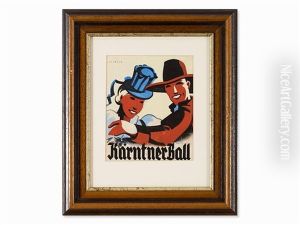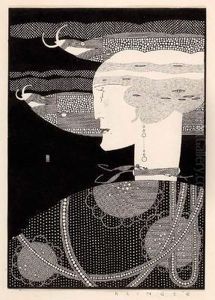Julius Klinger Paintings
Julius Klinger was an Austrian artist, graphic designer, and illustrator, born on May 22, 1876, in Vienna, Austria. He was a pivotal figure in the development of modern advertising and graphic design in the early 20th century. Klinger’s work was known for its innovative use of typography, visual puns, and simplified graphic forms, which significantly influenced the advertising and poster art of his time. He studied at the Technologisches Gewerbemuseum in Vienna, which laid the foundation for his diverse artistic skills.
Klinger's career took off in Berlin, where he moved in the late 1890s. There, he worked for various magazines and commercial enterprises, designing advertisements, logos, and posters. His style evolved over time, incorporating elements of Art Nouveau (Jugendstil) and later, the emerging modernist aesthetics of the time. Klinger was adept at using the power of visual imagery to sell products, services, and ideas, a talent that made him highly sought after by businesses across Europe.
In 1915, Klinger returned to Vienna, where he continued his work as a commercial artist, also teaching at the School of Applied Arts. Throughout the 1920s and 1930s, his work contributed to defining the visual culture of the era. He created numerous posters, book illustrations, and logos, many of which have become iconic in the field of graphic design. Klinger was not just a commercial artist; he also contributed to the fine arts with his paintings and drawings, which were exhibited in several European cities.
Unfortunately, Klinger’s life and career were tragically cut short by the events of World War II. As a Jew, he was targeted by the Nazi regime. In 1942, he was deported to the Minsk Ghetto in Belarus, where he died the same year. Despite the tragic end, Julius Klinger's legacy lives on through his influential work, which continues to be studied and admired for its creativity, wit, and pioneering approach to graphic design and advertising.

